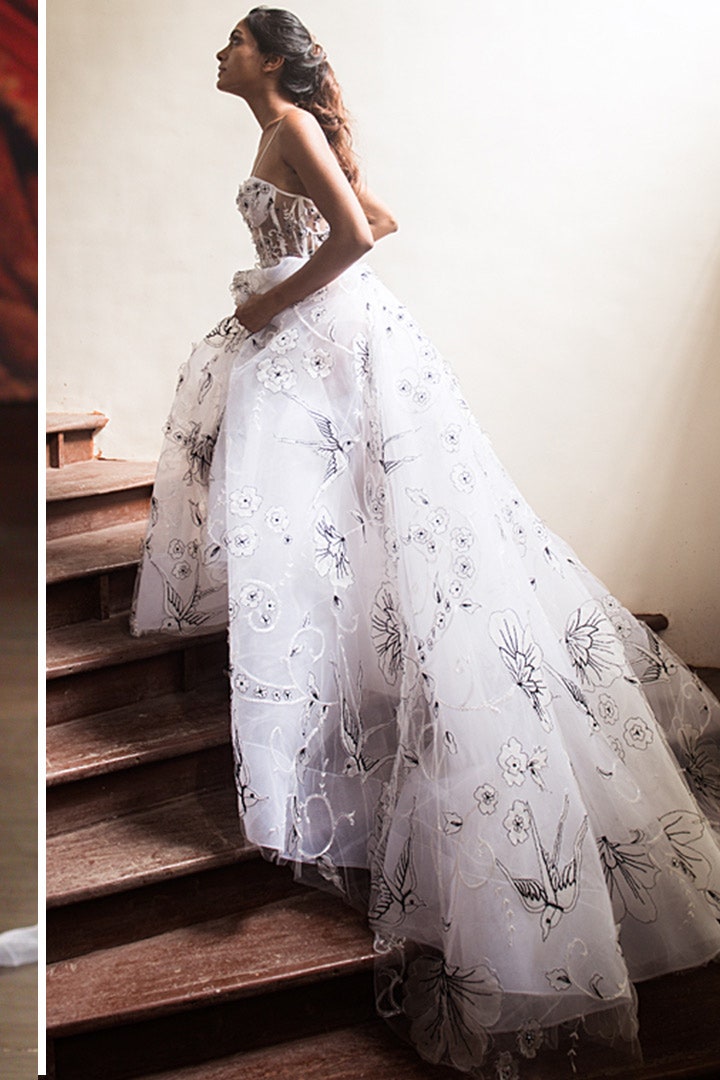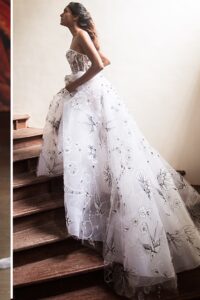The state of Oaxaca is said to have the greatest number of formally registered Indigenous communities in Mexico. Each of the 16 communities creates their own handicrafts and folk arts along with their unique textiles and hosts their own fiesta celebrations. The capital city, Oaxaca, hosts La Gueleguetza, a festival where delegates from the different regions wear their representative outfits and perform traditional dances. Dresses from three Oaxaca communities are seen here.
Huautla de Jimenez
In the village of Huautla de Jimenez, the women are known for their beautiful needlework and embroidery. They begin to embroider flower and bird designs on cotton squares when they are young girls. This embroidery is done in brilliant colors called colores chillones (colors that cry out). Later, they join the squares with satin ribbons to form the huipil of the adult outfit. Vintage huipils were embroidered with a satin running stitch while modern huipils are done in cross stitch. The women wear a shawl, carry a straw fan, and use a headpiece of braided ribbon.
San Juan Colorado
Women from San Juan Colorado in the Mixteca Baja region of Oaxaca, which borders the Pacific Ocean, draw inspiration and materials from the sea. The purple dye for the huipil and the posahuanco (skirt) of this wedding ensemble comes from snails harvested from the sea. The red dye comes from the cochineal bug found on cactus. The designs on the huipil feature rows of human figures holding hands and a row of scorpions. Scorpions were believed to bring rain by stinging lightning into the clouds to make them release their water. Women made their huipil to wear only on special occasions such as their wedding day, religious days, and funerals. The women from San Juan Colorado did not make their own posahuancos. They were made by women from a nearby village, Pinotepa de Don Luis.
Tehuana
Perhaps most well-known from Oaxaca is the Tehuana, descendants of the Zapotecs, one of the most developed Mesoamerica cultures during pre-Columbian times. The women of the Isthmus of Tehuantepec are renown worldwide for their colorful traditional dress. For festivals and gala events, the Tehuanas wear dresses made of velvet or satin embellished with embroidered flowers. A heavily starched lace edges the hem. The outfit’s most unique feature is its headdress called a resplendor, which can be worn framing the face or folded back off the face. The resplendor is said to have originated when Zapotec women discovered a shipwrecked trunk full of lacy baby garments. Not realizing what they were, they put them on their heads. Tehuanas accessorize their ensemble with as much gold jewelry as they can afford, which is often part of their dowry.
These outfits are part of a larger exhibition, Hilos de Tradicion: Dresses of Mexico, showcasing Mexican ensembles collected by the Brownsville Pan American Round Table beginning in the 1930s.







Leave a Comment